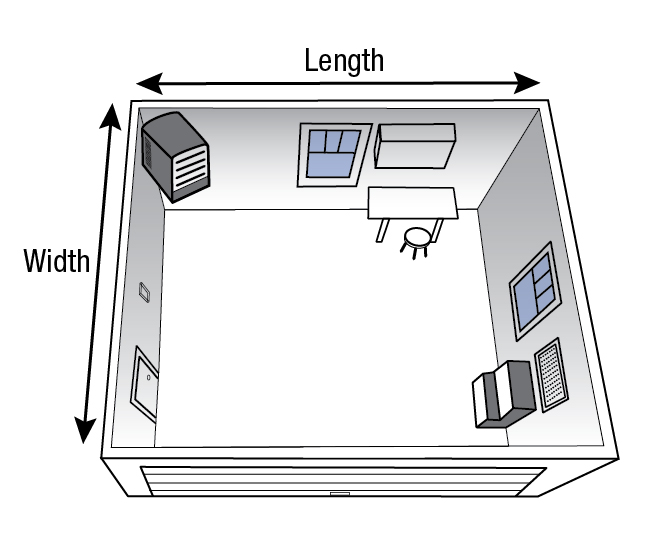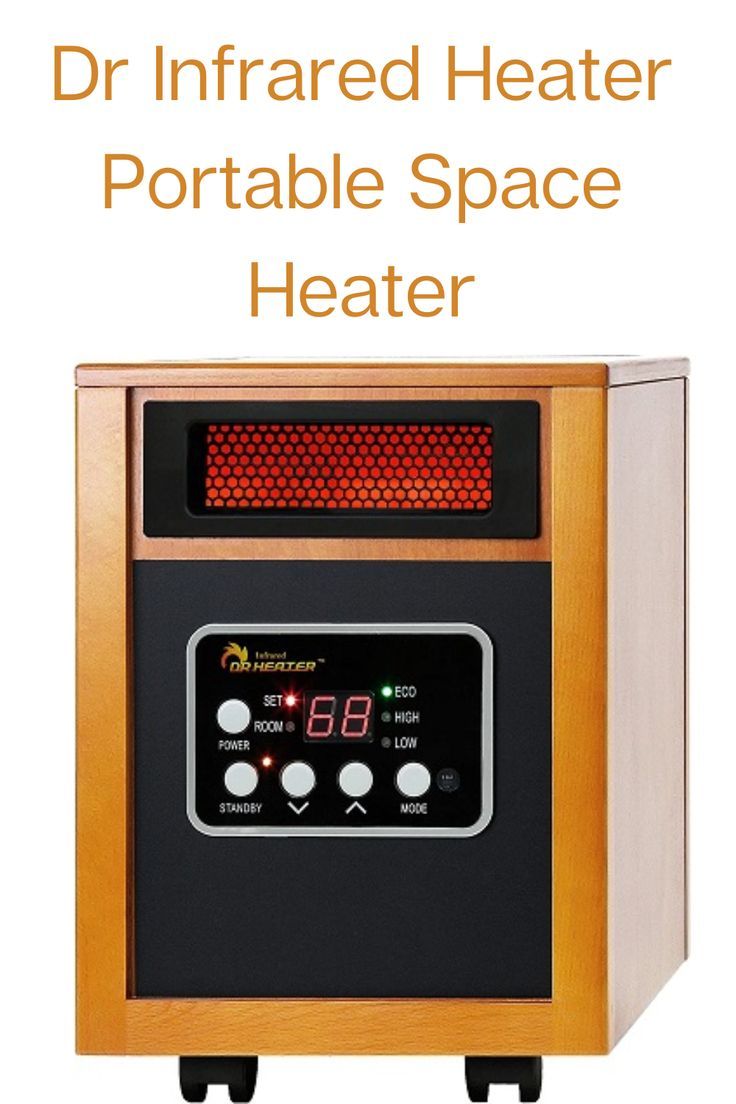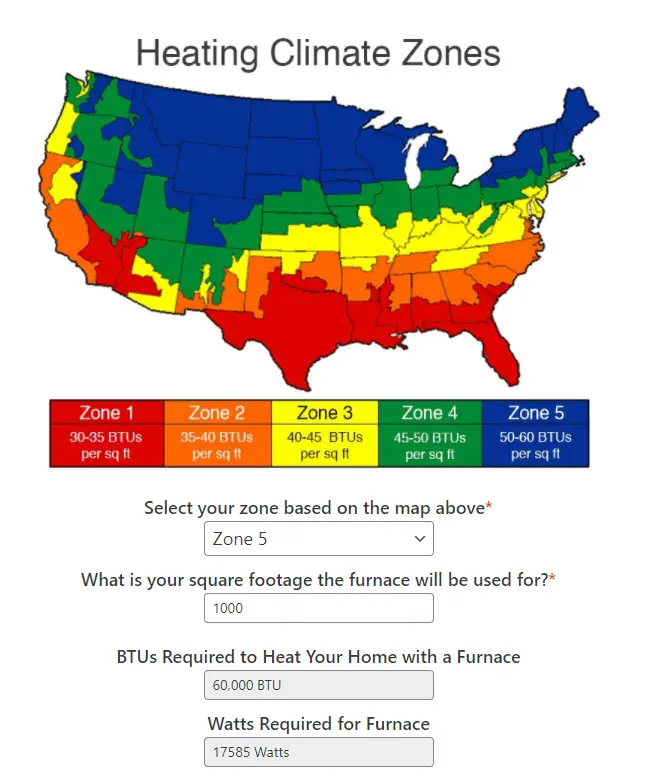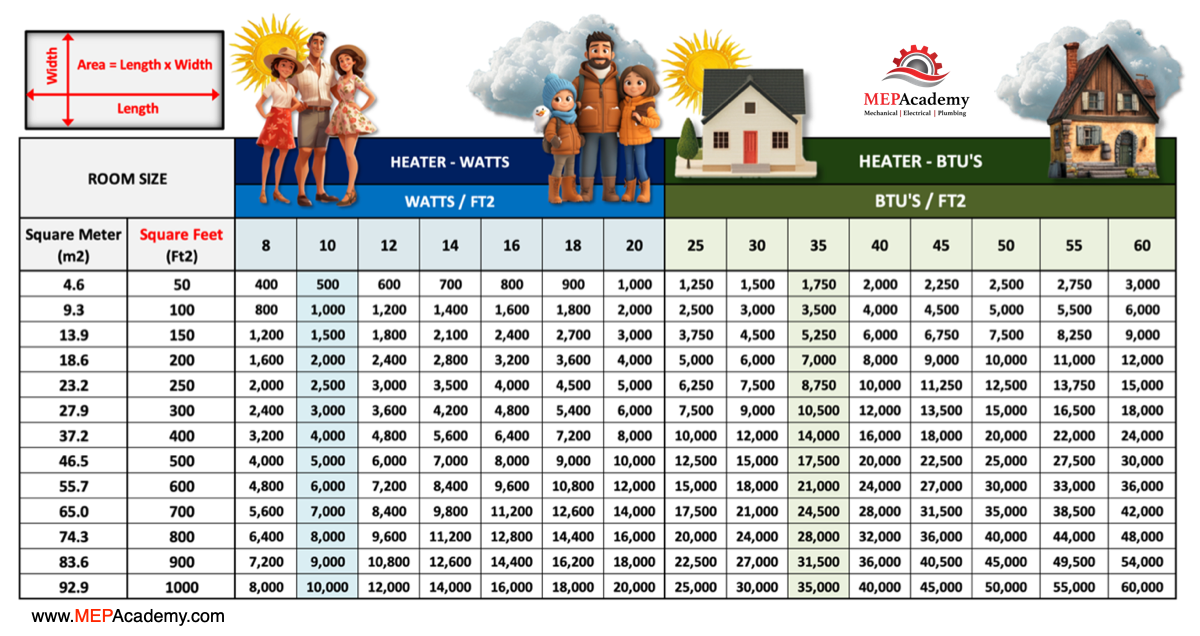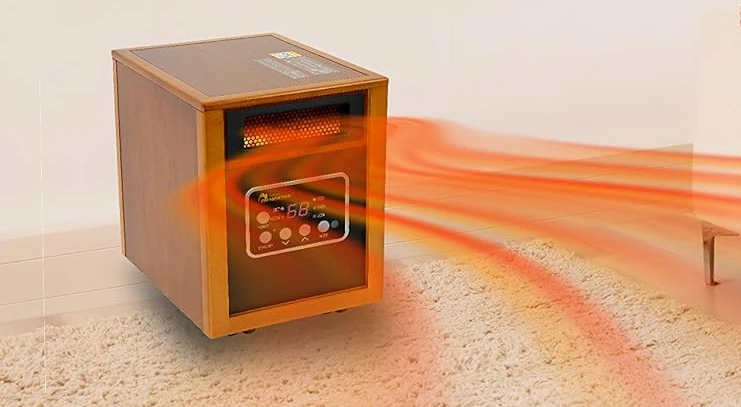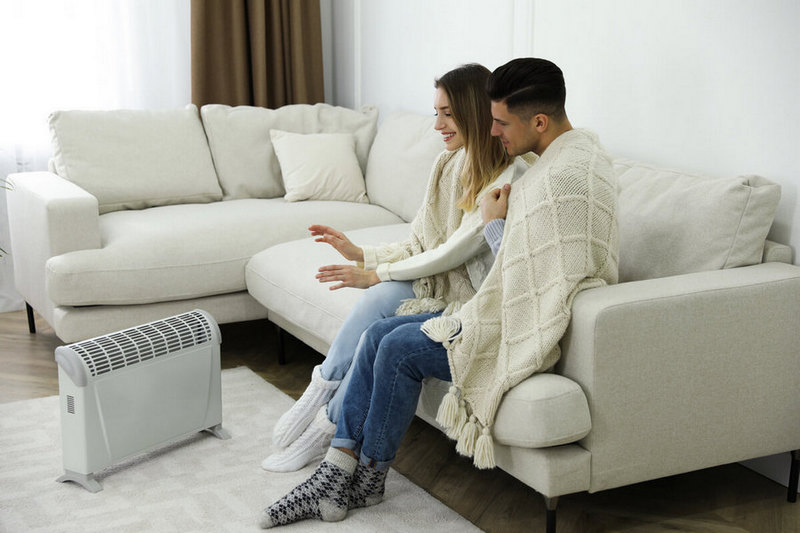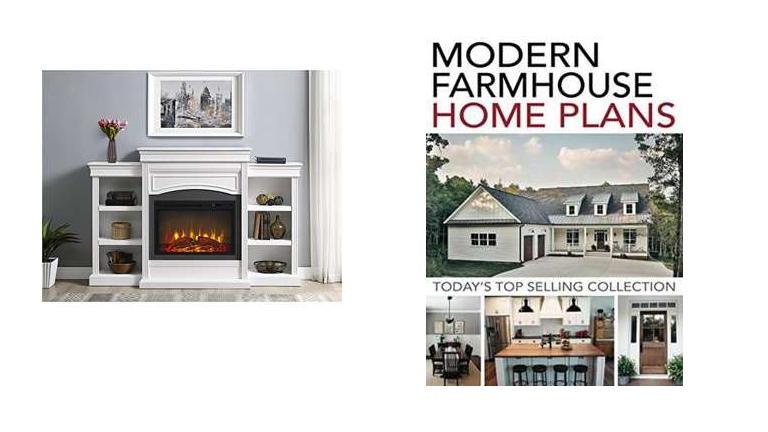What Size Heater For 1000 Square Feet

Imagine stepping into a cozy cabin after a long day in the snow. The warmth envelops you, chasing away the chill and inviting you to relax. But achieving that perfect level of comfort isn't just about turning up the thermostat. It's about understanding the science of heating and choosing the right equipment for your space.
Determining the appropriate heater size for a 1,000 square foot area requires careful consideration of several factors, including climate, insulation, and personal preferences. Understanding these elements ensures efficient heating and prevents both discomfort and unnecessarily high energy bills.
The Basic Formula: BTUs and Square Footage
The most common unit of measurement for heater output is the British Thermal Unit (BTU). A BTU represents the amount of energy needed to raise the temperature of one pound of water by one degree Fahrenheit.
Generally, a good rule of thumb is to calculate 20 BTUs per square foot in moderate climates. Therefore, a 1,000 square foot space would typically require a heater with around 20,000 BTUs. However, this is just a starting point.
Climate Considerations
Climate plays a significant role in determining the appropriate heater size. In colder regions, you'll need more BTUs per square foot. For instance, areas with harsh winters might require 30-40 BTUs per square foot, bringing the total for a 1,000 square foot space to 30,000-40,000 BTUs.
Conversely, in warmer climates, you might need less than 20 BTUs per square foot. This highlights the importance of tailoring your heating solution to your specific geographic location.
The Impact of Insulation
Insulation is a crucial factor often overlooked. Well-insulated homes retain heat more efficiently, requiring less heating power.
Homes with poor insulation will lose heat quickly, demanding a more powerful heater to maintain a comfortable temperature. Consider upgrading insulation before investing in a new heater to improve overall energy efficiency.
Other Factors to Consider
Beyond climate and insulation, other factors influence heating needs. Ceiling height is one example. Rooms with higher ceilings require more BTUs to heat effectively.
The number and size of windows also play a role. Windows are often points of heat loss, so rooms with many large windows may need a more powerful heater.
Types of Heaters for 1,000 Square Feet
Several types of heaters can effectively heat a 1,000 square foot space. Options include space heaters, furnaces, and heat pumps, each with its own advantages and disadvantages.
Space heaters are a cost-effective option for supplemental heating. However, they are typically best suited for heating individual rooms rather than an entire house.
Furnaces are a central heating option and often use natural gas, propane, or oil. They efficiently distribute heat throughout the entire space but require professional installation.
Heat pumps are an energy-efficient alternative, especially in moderate climates. They transfer heat rather than generating it, making them a sustainable choice.
Professional Advice and Installation
While online calculators and general guidelines can be helpful, consulting a professional HVAC technician is highly recommended. They can assess your specific needs and provide tailored recommendations.
Professional installation ensures that your heater operates safely and efficiently. It also helps to prevent potential issues down the road. Always prioritize safety when dealing with heating equipment.
Finding the Right Balance
Ultimately, choosing the right heater size is about finding a balance between comfort, efficiency, and cost. By considering factors like climate, insulation, and personal preferences, you can create a warm and inviting space without breaking the bank.
Remember, investing in a properly sized and installed heater is an investment in your comfort and well-being. It's about creating that perfect haven where you can truly relax and enjoy the warmth.
